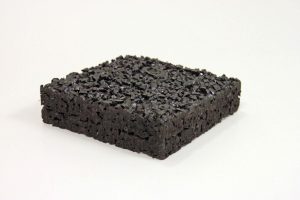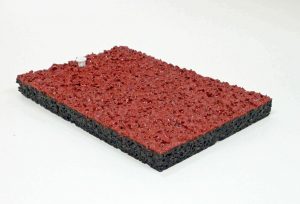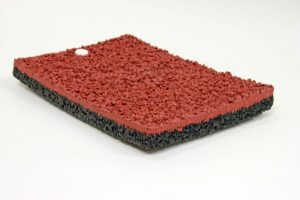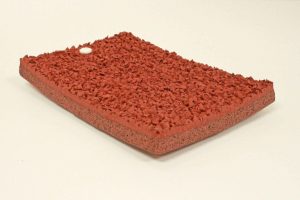Every project has a budget and no one wants to find out that they have spent too much.
Whether the track is for a high school, college, or other type of sports facility, selecting a track surface can often mean balancing cost and quality to figure out which option is right for you.
So what questions should you ask before laying a new track or replacing your track surface to make sure you get the most bang for your buck?
It starts with your budget.
There is a very large range of track surfaces and the most expensive options may cost four times as much as the cheapest option — so the first question should always be: How much does the district or owner reasonably want to spend? That will often set the parameters for the second question: How important are durability and performance?
The first thing to know is that there are two basic types of poured in place track systems: latex and polyurethane. Within polyurethane there are also a number of options that can improve durability and performance, but will also increase cost.
Let’s break it down:
Latex

Latex doesn’t hold its resiliency as well as polyurethane, but it is usually the lowest cost option.
Typically, latex is going to be the lowest cost. The cons of selecting a latex system is that over time it will get harder faster. It doesn’t hold its resiliency as well as polyurethane, so it will age quicker. But the benefit is that latex is quite a bit cheaper. Particularly for high school districts that have a small budget, latex may be a good option based on the cost.
Polyurethane
Compared to latex, a polyurethane binder will hold its resiliency longer. A polyurethane system typically starts with a base mat, a layer of rubber granules held together with a polyurethane binder. There are also a number of options available to further increase the durability and life-span of the track.
Adding a structural spray

A single component structural spray helps hold the system together, meaning there is more durability.
Although polyurethane is more durable than latex, if students or athletes regularly use cleats on the track surface, eventually the cleats will pull up the rubber. Adding a single component structural spray helps hold the system together, meaning there is added durability. A two component structural spray also prevents water from permeating the track and getting underneath, preventing damage that can happen when the water freezes and thaws. For most high school districts, this is generally our mid-point recommendation because it has a good life-span and good performance without costing as much as some of the high-end systems.
A sandwich system

In a sandwich system, a thick layer of polyurethane is squeegeed on top of the base mat system. This thick layer protects the fragile rubber base mat, further extending the life of the track.
Immediately after the thick polyurethane is squeegeed onto the basemat another layer of rubber granules is broadcast out into the polyurethane. These broadcast granules are then allowed to cure and set into the polyurethane. After several days of curing, the loose granules are removed from the surface and you are left with the completed sandwich system: a highly impermeable, durable and resilient surface, that if maintained, will last an owner for decades to come.
A full pour

A full pour is generally considered top of the line.
Finally, the top of the line is generally considered a full-pour. By choosing a full-pour system, the rubber base mat is eliminated entirely, meaning the track is less likely to peel up and will have the best performance and durability. Although some high schools do use a full-pour system, it is most common at the collegiate level.
In conclusion…
Depending on your needs, any of the systems can result in a great track. By talking to an impartial expert first, such as Sportworks Field Design, you can better figure out which track is best for you and create specifications to get exactly what you want. This will allow you to take bids and to compare apples to apples, ensuring you get the best deal for your money. And when it comes time for construction, Sportworks can work with you and the contractor to ensure that the system is built using industry standard methods that will yield years or reliable performance as well.
